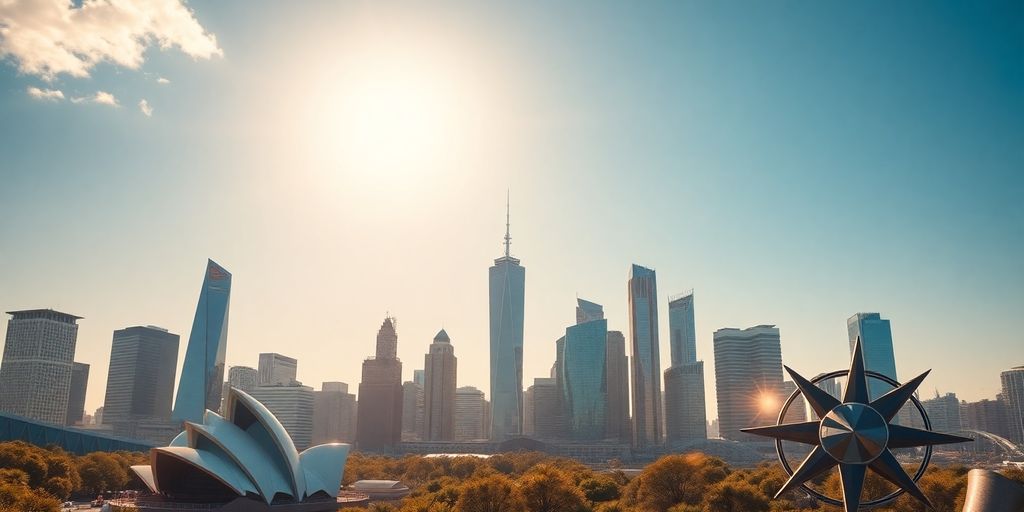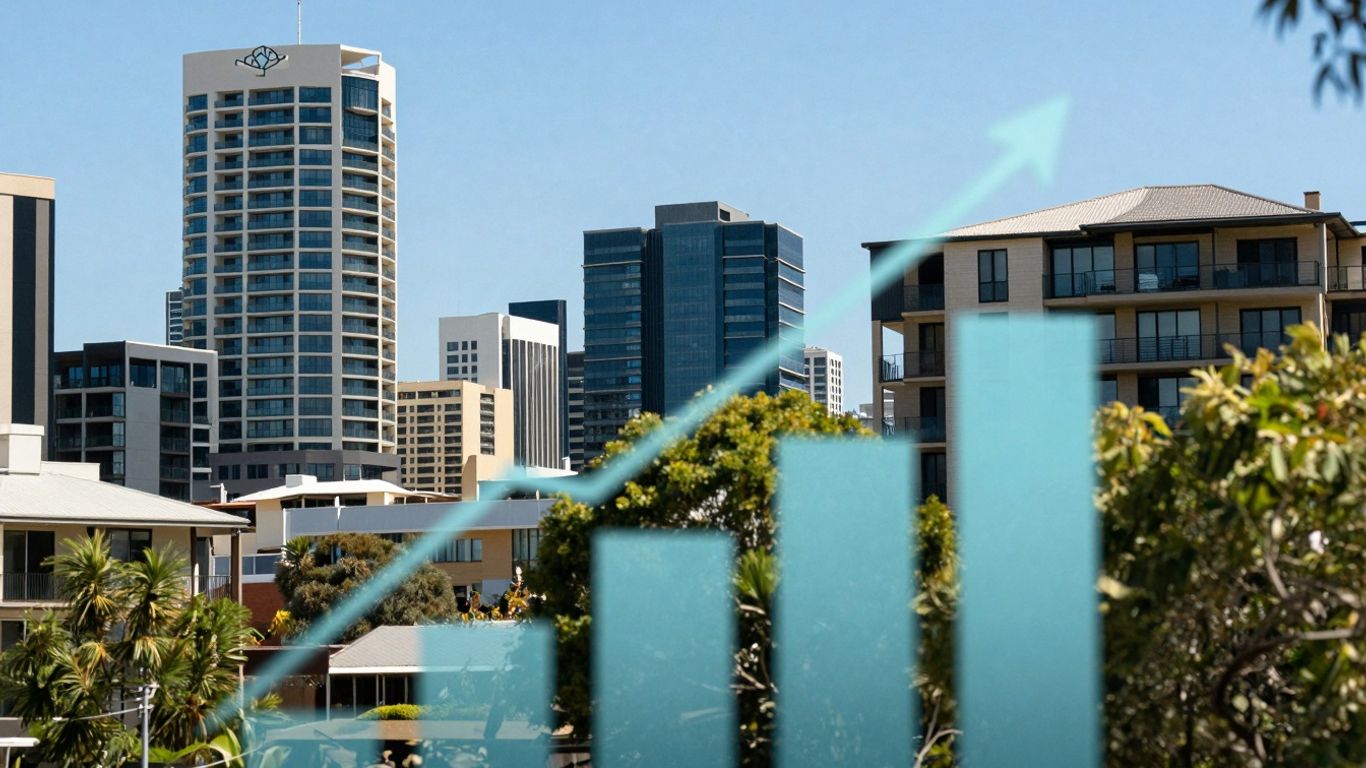Thinking about setting up shop in Australia as a foreigner? It’s a great idea, the country’s got a lot going for it. But getting the right visa can be a bit of a maze. This guide is all about the australia visa 188, which used to be the go-to for business folks. We’ll break down what it was all about, who it was for, and what you need to know now, especially since new applications aren’t being taken for a while. We’ll also touch on other options if you’re looking to bring your team over.
Key Takeaways
- The australia visa 188 was designed for business owners and investors wanting to start or buy into an Australian business.
- New applications for the Subclass 188 visa are currently not being accepted for the 2023-24 period.
- A new ‘National Innovation visa’ is expected by the end of 2024, which might be an alternative.
- If you applied for a Subclass 188 visa before July 2024, your application will still be processed.
- For hiring overseas staff, consider the Temporary Skill Shortage Visa (Subclass 482) and ensure your business meets sponsorship requirements.
Understanding the Australia Visa 188
Australia is a great spot for folks wanting to start or invest in a business. The country has a pretty solid economy and a supportive environment for new ventures. If you’re looking to set up shop here as a foreigner, you’ll need the right visa to get in and operate legally. This section is all about the Business Innovation and Investment (Provisional) Visa, or Subclass 188 as it’s known. It’s been a key pathway for entrepreneurs wanting to get their business ideas off the ground in Australia.
Purpose of the Business Innovation and Investment Visa
The main idea behind this visa is to bring people to Australia who can contribute to the economy through business and investment. It’s for those who want to own and manage a business in Australia, or make a significant investment. Basically, the government wants people who will create jobs, boost trade, and generally add to the country’s economic activity.
Visa Subclass 188: An Overview
The Subclass 188 visa is a temporary visa, meaning it’s not permanent straight away. It’s part of a larger program designed to attract business talent. There are different streams within the 188 visa, each with its own specific requirements. These streams are generally aimed at different types of business people, like those who want to start a new business, manage an existing one, or make a substantial investment. It’s a stepping stone, really, to potentially getting permanent residency later on.
Current Status of the Subclass 188 Visa
It’s important to know that the landscape for this visa has changed recently. For the 2023-24 period, the Australian government announced it’s not accepting new applications for the Business Innovation and Investment Program. They’re looking at new ways to attract talent and innovation, with a new visa expected towards the end of 2024. However, if you had already lodged an application before July 2024, it will still be processed. So, while the door is temporarily closed for new applicants, it’s worth keeping an eye on future developments, especially the upcoming National Innovation visa. For those with existing applications, the process can be quite involved, requiring careful preparation to show how your business will benefit Australia. Getting help from migration consultants can make a big difference here. For those looking to invest significantly, the Significant Investor Stream (Subclass 188 Provisional) visa requires applicants to demonstrate AUD 5 million in lawfully acquired, unencumbered funds available for a Complying Significant Investment in Australia.
Eligibility and Requirements for the Subclass 188

So, you’re thinking about bringing your business smarts to Australia? That’s fantastic! But before you start packing your bags, we need to chat about who actually qualifies for the Business Innovation and Investment (Provisional) Visa, or Subclass 188 as it’s known. It’s not just a case of wanting to move; there are some pretty specific boxes you need to tick.
Key Criteria for Business Innovation Stream
This stream is for folks who want to set up or buy into a business in Australia. You’ll need to show you’ve got a solid business background. This usually means having owned and managed a business for a certain period. The government wants to see that you’re not just coming over to dabble; they want active business owners. You’ll also need to have a turnover of at least $500,000 in your business for two of the last four fiscal years. Plus, you need to have a net business and personal asset value of at least $800,000 that you can genuinely transfer to Australia.
Investment Requirements for the Investor Stream
If you’ve got a bit more capital and prefer to invest rather than run a day-to-day business, the Investor Stream might be more your speed. The big one here is the investment amount. You must make a designated investment of at least AUD $2.5 million in a qualifying Australian investment fund. This isn’t just any investment; it has to be in specific types of funds that support the Australian economy. You also need to have a history of eligible investment activities and a commitment to maintaining business and investment activity in Australia after you get the visa. There are also asset and turnover requirements for your previous business or investment activities, though they differ slightly from the Business Innovation stream.
Entrepreneurial Background and Age Limits
Generally, for the Business Innovation stream, you need to be under 55 years old when you apply, although there can be waivers for exceptional cases. You also need to demonstrate a genuine commitment to establishing and managing a business in Australia. For the Investor stream, there isn’t a strict age limit, but your overall profile, including your business and investment history, is assessed. It’s all about showing you have the experience and the drive to contribute positively to Australia’s economy.
Navigating the Application Process
So, you’ve decided the Business Innovation and Investment Visa (subclass 188) is the way to go for your Australian business dreams. That’s a big step! Now comes the part where you actually put the wheels in motion. It’s not exactly a walk in the park, but with a bit of organisation and knowing what’s what, you can get through it.
State or Territory Nomination
Before you can even think about submitting your main application, you’ll likely need to get nominated by an Australian state or territory. This isn’t just a formality; it shows that your business or investment idea aligns with what that particular region needs. Each state has its own specific criteria and business focus, so you’ll need to do your homework to see who’s looking for what you’re offering. Some states might be keen on tech startups, others on agricultural ventures, or perhaps significant investment in established industries. Getting the right nomination is a really important first step. You can’t proceed without it.
Expression of Interest and Invitation to Apply
Once you have your nomination sorted, the next stage involves lodging an Expression of Interest (EOI) through the Department of Home Affairs’ online system, called SkillSelect. Think of this as putting your hand up and saying, "I’m interested and I meet the basic requirements." You’ll need to provide details about your business or investment proposal, your personal assets, and your business acumen. After you submit your EOI, you wait. If your EOI is strong enough and meets the specific requirements of the visa stream you’re applying for, you might receive an Invitation to Apply (ITA). This ITA is your golden ticket to actually lodge the full visa application.
Gathering Essential Documentation
This is where the real grunt work comes in. The visa application requires a mountain of paperwork to prove you meet all the eligibility criteria. This includes things like:
- Business ownership and management documents
- Financial statements and evidence of assets
- Evidence of investment funds and their source
- Personal identification and character checks (police certificates)
- English language proficiency proof
- Health examinations
- Details of your proposed business or investment in Australia
It’s vital that all your documents are accurate, translated if necessary, and presented clearly. Any missing or incorrect information can cause significant delays or even lead to your application being refused. It’s a good idea to get professional help with this part, as immigration advisors know exactly what’s needed. For assistance with your visa application, consider reaching out to Absolute Immigration.
The entire process can feel a bit overwhelming, especially with all the different requirements and the need for precise documentation. Taking it step-by-step and focusing on one requirement at a time can make it more manageable. Remember, thorough preparation is key to a successful outcome.
Transitioning to Permanent Residency
So, you’ve successfully navigated the provisional stages of the Business Innovation and Investment Visa (Subclass 188) and are ready to make Australia your permanent home. That’s fantastic news! The next step involves applying for the permanent version of the visa, typically the Business Innovation and Investment (Permanent) Visa (Subclass 888). This isn’t just a formality; it requires demonstrating that your business activities in Australia have been substantial and have genuinely contributed to the local economy.
Pathway to the Business Innovation and Investment (Permanent) Visa
To move from your provisional 188 visa to the permanent 888 visa, you’ll need to meet specific criteria related to your business operations and residency in Australia. The exact requirements can vary slightly depending on which stream of the 188 visa you initially applied for (e.g., Business Innovation, Investor, or Significant Investor). Generally, you’ll need to show a sustained period of business activity and a significant turnover, alongside meeting residency requirements. It’s important to check the specific criteria for your stream well in advance, as some requirements need to be met over a continuous period.
Meeting Residency and Business Requirements
Meeting the residency requirement usually means you’ve spent a certain amount of time physically present in Australia while holding your provisional visa. For the business requirements, you’ll need to provide solid evidence of your business’s success. This often includes financial statements, tax returns, and proof of employee numbers or business assets. For example, if you were in the Business Innovation stream, you might need to show a certain annual turnover for at least two of the last four fiscal years. For the Investor stream, it’s about maintaining the required investment for the specified period. The Subclass 188 Extension Stream can be a useful option if you need a bit more time to solidify these achievements.
Demonstrating Ongoing Business Success
Proving ongoing success is key. This means showing that your business isn’t just ticking boxes but is actively contributing and growing. Think about how your business has created jobs for Australians, introduced new products or services, or boosted exports. You’ll need to present a clear picture of your business’s financial health and its positive impact.
Here’s a general idea of what you might need to show:
- Financial Records: Audited financial statements for your Australian business.
- Taxation Records: Evidence of tax compliance in Australia.
- Business Activity: Documents like invoices, contracts, and supplier agreements.
- Employment Records: Payslips and employment contracts for Australian employees.
- Asset Statements: Proof of ownership of business assets in Australia.
It’s really about showing the Department of Home Affairs that you’ve not only followed the rules but have genuinely invested in and benefited Australia through your business endeavours. This stage requires thorough documentation and a clear narrative of your journey.
Alternative Visas for Business Founders

The Temporary Skill Shortage Visa (Subclass 482)
So, you’ve got a great business idea and you’re looking to bring some international talent on board to help get it off the ground in Australia? That’s where the Temporary Skill Shortage Visa, or Subclass 482, comes into play. It’s basically for businesses that need to hire skilled workers from overseas because they just can’t find the right people here in Australia. It’s a pretty common route for startups needing specific skills.
Employer Sponsorship for Skilled Workers
For the Subclass 482 visa, your business needs to be an approved sponsor. This means the Department of Home Affairs has given your company the green light to sponsor overseas workers. Then, your business has to nominate a specific job role that needs filling, and you’ll need to show that you’ve genuinely tried to find an Australian to do the job, but it just hasn’t worked out. It’s all about proving there’s a genuine skill shortage.
Eligibility for the TSS Visa
To be eligible for this visa, the person you want to hire generally needs at least two years of relevant work experience in the job you’re nominating them for. Plus, the job itself has to be on the government’s list of eligible skilled occupations. It’s not a free-for-all; there are specific criteria that both the business and the potential employee need to meet. If you’re looking at different ways to establish a business in Australia, exploring these business visa options for Australia in 2025 can be a good starting point.
It’s important to remember that the visa process can be quite detailed. Making sure all the paperwork is spot on and that your business meets the sponsorship requirements is key. Getting it wrong can lead to delays or even the application being refused, so it’s worth taking the time to get it right.
Maximising Your Visa Success
Getting your visa sorted for Australia can feel like a big hurdle, but there are ways to make it smoother. It’s not just about ticking boxes; it’s about presenting your case clearly and making sure you’ve got all your ducks in a row. Getting professional help can really make a difference.
The Value of Expert Immigration Advice
Look, Australian immigration rules are pretty detailed, and they change sometimes too. Trying to figure it all out yourself can be a real headache. That’s where immigration advisors come in. They know the ins and outs, what the government is looking for, and can help you avoid common mistakes. Think of them as your guide through the maze. They can help with everything from checking if you’re eligible to making sure your application is spot-on. For instance, services can offer a quick way to see if you might qualify for certain visas, like the Employer Sponsored Visa.
Tips for a Strong Application
To give yourself the best shot at getting your visa approved, here are a few pointers:
- Start Early: Don’t leave things to the last minute. Visa processes can take a while, so getting started early means you won’t be rushing.
- Get Professional Help: As mentioned, an immigration advisor can be a lifesaver. They’ll help you understand all the requirements and make sure your paperwork is perfect.
- Know the Rules: Really dig into the eligibility criteria for the visa you’re after. Make sure you and your business tick all the boxes.
- Documentation is Key: Have all your documents ready, accurate, and up-to-date. Double-check everything before you submit it.
- Stay Updated: Keep an eye on any changes to immigration laws or policies. What’s true today might be different next month.
Sometimes, the simplest approach is the best. Focus on presenting your business and your intentions clearly and honestly. Making sure your application reflects genuine business activity and a commitment to Australia is always a good strategy.
Staying Informed on Policy Changes
It’s a good idea to keep up with any news about Australian immigration. Policies can shift, and knowing about these changes means you can adjust your plans if needed. This way, you’re always working with the most current information, which helps avoid surprises down the track. This is especially important if you’re looking at the Business Innovation and Investment (Permanent) Visa pathway.
Wrapping Up Your Australian Business Journey
So, getting your business set up in Australia can feel like a bit of a maze, especially with the visa stuff. Remember, the old 188 visa isn’t taking new applications right now, but keep an eye out for that new talent visa coming later in 2024. If you’re looking to bring in staff, the Temporary Skill Shortage visa is an option, but you’ll need to make sure your business is set up as a sponsor. It’s not always straightforward, so getting some advice from migration experts can really make a difference. They can help sort out the paperwork and make sure you’re on the right track, letting you focus on actually building your business here. Good luck with it all!
Frequently Asked Questions
Is the Subclass 188 visa still available?
The Subclass 188 visa is currently not accepting new applications for the 2023-24 period. The government is planning a new talent and innovation visa, expected around the end of 2024. If you applied before July 2024, your application should still be processed.
What was the Subclass 188 visa for?
The Subclass 188 visa was for people who wanted to start or take over a business in Australia. It was part of a program to bring business owners and investors to the country.
What are the basic requirements to apply for these visas?
To apply for visas like the Subclass 188 or the Temporary Skill Shortage (TSS) visa (Subclass 482), you need to meet specific requirements. This often includes having business experience, a certain amount of money to invest, and meeting age limits. For the TSS visa, you need relevant work experience and a job offer from an approved Australian business.
Can I bring my team from overseas?
Yes, you can hire people from overseas. If you need to bring in team members for your startup, you’ll likely need an employer-sponsored visa, like the Temporary Skill Shortage (TSS) Visa (Subclass 482). The business needs to be an approved sponsor and the job must be on a list of eligible occupations.
Should I get help with my visa application?
It’s a good idea to get help from immigration experts. They can guide you through the complex process, make sure your paperwork is correct, and help you understand all the rules. This can save you time and prevent problems.
What are some good tips for a successful visa application?
It’s important to start your visa application early because it can take a long time. Make sure all your documents are accurate and up-to-date. Also, keep an eye on any changes to Australia’s immigration laws, as these can affect your application.





